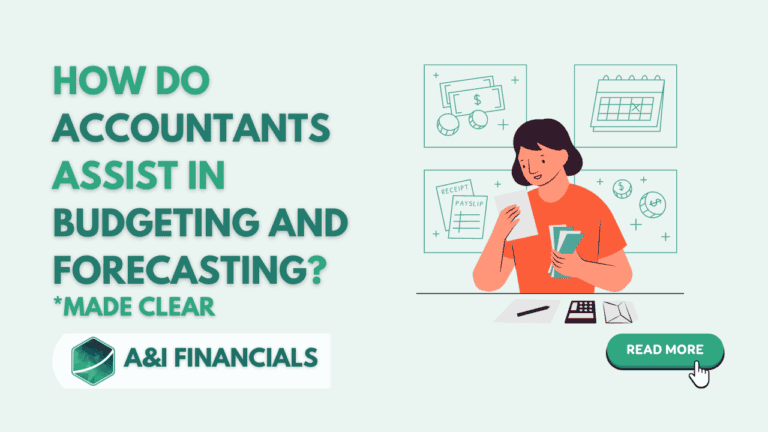Everything You Need to Know About Classified Balance Sheet
Introduction
Hey there! Have you ever looked at a company’s financial statement and felt like you were staring at a foreign language? You’re not alone. Financial statements, especially balance sheets, can seem confusing at first.
But today, we’re going to break it all down in a simple and fun way. By the end of this article, you’ll understand a classified balance sheet like a pro. So grab a cup of coffee, get comfortable, and let’s dive into the world of classified balance sheets.
What is a Classified Balance Sheet?
In simple terms, a classified balance sheet is like a well-organized closet. Just as you wouldn’t throw all your clothes into a heap on the floor, a classified balance sheet neatly arranges a company’s financial information into categories.
It breaks down assets, liabilities, and equity into subcategories, making it easier to understand and analyze. Think of it as a way to see the financial health of a company at a glance.
Why is it Important?
Why bother with all this classification, you ask? Well, imagine trying to find your favorite shirt in a messy room versus a tidy one. The same logic applies here. A classified balance sheet provides clarity and insight, helping stakeholders—like investors, creditors, and management—make informed decisions. It highlights the company’s strengths and potential red flags, aiding in everything from investment choices to strategic planning.
Main Sections
A classified balance sheet is divided into three main sections: assets, liabilities, and equity. Each section shares a different part of the company’s financial story. Let’s take a closer look at these sections and what they represent.
Structure of a Classified Balance Sheet
Explanation of Classification
Before we dive into the details, let’s understand why we classify these elements. Classification groups similar items together, allowing for easier comparison and better analysis. For instance, all current assets are grouped together, so you can quickly see how much cash or inventory a company has on hand.
Benefits of a Classified Format
Why is this format beneficial? It offers several advantages:
- Clarity: By grouping similar items, it makes the balance sheet easier to read and understand.
- Comparison: It enables simple comparisons between various periods and companies.
- Analysis: Helps in better analysis of the company’s financial health and performance.
Now that we know the why, let’s move on to the what—what exactly goes into each section of a classified balance sheet.
Assets
Current Assets
Current assets are like the cash in your wallet or the groceries in your pantry—they’re items that are expected to be converted into cash or used up within a year.
Definition and Characteristics
Current assets are short-term in nature and are typically more liquid, meaning they can be quickly turned into cash.
Examples:
- Cash and Cash Equivalents: This includes physical cash, bank balances, and short-term investments that can be quickly converted into cash.
- Marketable Securities: These are liquid financial instruments that can be easily sold, like stocks or bonds.
- Accounts Receivable: Money that customers owe to the company.
- Inventory: Goods available for sale.
- Prepaid Expenses: Paying early for things or services that will be received later.
- Short-term Investments: Investments that are expected to be sold within a year.
- Other Current Assets: Miscellaneous short-term assets.
Non-current Assets
Non-current assets, on the other hand, are like the furniture in your living room or your car—they’re long-term investments that provide value over several years.
Definition and Characteristics
These are assets the company owns that won’t be turned into cash within a year.They often require more significant investments and are less liquid.
Examples:
- Property, Plant, and Equipment (PP&E): Tangible assets like land, buildings, machinery, and equipment.
- Land: The ground owned by the company.
- Buildings: Structures owned by the company.
- Machinery and Equipment: Tools and machines used in production.
- Furniture and Fixtures: Office furniture, fixtures, etc.
- Accumulated Depreciation: The reduction in value of tangible assets over time, shown as a contra-asset.
- Long-term Investments: Investments held for more than a year.
- Intangible Assets: Non-physical assets that have value.
- Goodwill: The value of a company’s brand name, customer relationships, etc.
- Patents: Exclusive rights to use a particular invention.
- Trademarks: Protected symbols, names, and slogans.
- Copyrights: Exclusive rights to use artistic works.
- Other Non-current Assets: Deferred tax assets, long-term receivables, etc.
Liabilities
Current Liabilities
Current liabilities are like the bills you need to pay by the end of the month—obligations that need to be settled within a year.
Definition and Characteristics
These are short-term financial obligations that a company needs to pay off within a year.
Examples:
- Accounts Payable: Money the company owes to its suppliers.
- Short-term Debt: Loans and other debts that must be paid within a year.
- Current Portion of Long-term Debt: The part of long-term debt that is due within the next year.
- Accrued Liabilities: Costs that have been incurred but not yet paid.
- Unearned Revenue (Deferred Revenue): Money received for goods or services not yet delivered.
- Other Current Liabilities: Miscellaneous short-term obligations.
Non-current Liabilities
Non-current liabilities are like your mortgage or student loans—long-term obligations that extend beyond a year.
Definition and Characteristics
These are long-term financial obligations that a company needs to pay off over a period longer than a year.
Examples:
- Long-term Debt: Loans and borrowings due after one year.
- Deferred Tax Liabilities: Taxes owed in the future due to temporary differences between accounting and tax bases.
- Pension Liabilities: Obligations to pay employee pensions.
- Lease Liabilities: Long-term lease obligations.
- Bonds Payable: Debt securities issued by the company.
- Other Non-current Liabilities: Miscellaneous long-term obligations.
Equity
Shareholders’ Equity
Equity is like the ownership stake you have in your house after paying off part of your mortgage. It’s the remaining interest in the company’s assets after subtracting liabilities.
Definition and Characteristics
Shareholders’ equity is the owners’ stake in the company after all debts have been paid.
Components:
- Common Stock: Ownership in a corporation that includes voting rights.
- Preferred Stock: Equity ownership with preference over common stock in dividends and asset liquidation.
- Additional Paid-in Capital: Excess amount paid by investors over the par value of the stock.
- Retained Earnings: Profits that have been reinvested in the company instead of being paid out as dividends.
- Treasury Stock (Contra-equity): Company’s own stock that has been repurchased.
- Accumulated Other Comprehensive Income (AOCI): Gains and losses not included in net income.
Notes to the Financial Statements
Importance and Purpose
Notes are the footnotes to the financial statements. They provide additional details and context that aren’t immediately apparent in the main sections of the balance sheet.
Common Disclosures:
- Summary of Significant Accounting Policies: Details on the accounting methods used.
- Details of Certain Assets and Liabilities: Additional information on specific items.
- Contingencies and Commitments: Potential liabilities and commitments.
- Subsequent Events: Events occurring after the balance sheet date that impact the financial statements.
- Related Party Transactions: Transactions with related parties.
- Segment Information: Financial information by business segments, if applicable.
Analysis and Interpretation
Understanding a classified balance sheet is one thing, but analyzing it is where the real magic happens. Let’s look at some key analysis tools.
Ratio Analysis
Ratios help us understand the financial health and performance of a company.
- Liquidity Ratios: Measures a company’s ability to pay off short-term obligations.
- Current Ratio: Current Assets / Current Liabilities
- Quick Ratio: (Current Assets minus Inventory) divided by Current Liabilities
- Solvency Ratios: Measures a company’s ability to meet long-term obligations.
- Debt to Equity Ratio: Liabilities / Shareholder Equity
- Interest Coverage Ratio: EBIT / Interest Expense
- Profitability Ratios: Measures a company’s ability to generate profit.
- Return on Assets (ROA): Net Income ÷ Total Assets
- Return on Equity (ROE): Net Income / Shareholders’ Equity
Trend Analysis
Trend analysis means looking at financial statements over several periods to spot patterns and trends. It helps see how the company is performing over time. For example, if revenue is growing every quarter, it’s a good sign. If debt is increasing, it might be a warning.
Industry Comparison
Industry comparison means comparing a company’s financials with other companies in the same industry. It helps understand how well the company is doing compared to its competitors. If a company’s profits are higher than others in the industry, it’s doing well. If they’re lower, it might need to improve some areas.
Common Mistakes and Pitfalls
Even seasoned accountants can make mistakes. The following are some common pitfalls to avoid:
- Misclassification of Items: Placing items in the wrong category can lead to misleading financial statements.
- Incomplete Disclosures: Failing to provide necessary information in the notes can result in a lack of transparency.
- Inaccurate Valuations: Overestimating or underestimating asset values can distort the financial picture.
Practical Examples
Sample Classified Balance Sheet
Let’s look at a sample classified balance sheet to see how all these pieces come together.
Assets
- Current Assets
- Cash and Cash Equivalents: $50,000
- Accounts Receivable: $30,000
- Inventory: $20,000
- Prepaid Expenses: $5,000
- Non-current Assets
- Property, Plant, and Equipment: $100,000
- Long-term Investments: $40,000
- Intangible Assets: $30,000
Liabilities
- Current Liabilities
- Accounts Payable: $25,000
- Short-term Debt: $15,000
- Accrued Liabilities: $10,000
- Non-current Liabilities
- Long-term Debt: $70,000
- Deferred Tax Liabilities: $5,000
Equity
- Common Stock: $50,000
- Additional Paid-in Capital: $20,000
- Retained Earnings: $50,000
- Treasury Stock: ($5,000)
Case Study: Analysis of a Real Company’s Classified Balance Sheet
Imagine you’re analyzing a tech company’s balance sheet. You notice their current ratio is 2:1, indicating strong liquidity. However, their debt to equity ratio is 1.5:1, suggesting higher leverage. By comparing these ratios with industry peers, you can assess their financial stability and risk.
Preparation of a Classified Balance Sheet
Creating a classified balance sheet involves organizing financial data into clear and logical categories. Here is a step-by-step guide on how to prepare one:
1. Gather Financial Data:
Collect all the necessary financial information from your accounting records, including assets, liabilities, and equity.
2. Classify Assets:
- Current Assets: Identify all assets that are expected to be converted into cash or used up within a year. This includes cash, accounts receivable, inventory, prepaid expenses, and short-term investments.
- Non-current Assets: Identify long-term assets that provide value over several years. This includes property, plant, and equipment (PP&E), long-term investments, and intangible assets like goodwill and patents.
3. Classify Liabilities:
- Current Liabilities: Identify all obligations that need to be settled within a year. This includes accounts payable, short-term debt, the current portion of long-term debt, accrued liabilities, and deferred revenue.
- Non-current Liabilities: Identify long-term obligations that extend beyond a year. This includes long-term debt, deferred tax liabilities, pension liabilities, lease liabilities, and bonds payable.
4. Determine Equity:
- Calculate shareholders’ equity by identifying common stock, preferred stock, additional paid-in capital, retained earnings, treasury stock, and accumulated other comprehensive income (AOCI).
5. Prepare the Balance Sheet:
- Header: Start with a header that includes the company name, the title “Classified Balance Sheet,” and the date of the financial statement.
- Assets Section: List current assets followed by non-current assets, with sub-totals for each category.
- Liabilities Section: List current liabilities followed by non-current liabilities, with sub-totals for each category.
- Equity Section: List all components of shareholders’ equity and calculate the total equity.
- Balance Check: Ensure that the total assets equal the sum of total liabilities and shareholders’ equity, maintaining the balance sheet equation: Assets = Liabilities + Equity.
6. Include Notes to the Financial Statements:
- Provide additional details and context that aren’t immediately apparent in the main sections of the balance sheet. This includes the summary of significant accounting policies, details of certain assets and liabilities, contingencies, commitments, subsequent events, related party transactions, and segment information if applicable.
Classified Balance Sheet vs. Unclassified Balance Sheet
Understanding the differences between a classified balance sheet and an unclassified balance sheet is crucial for anyone analyzing financial statements. Let’s dive into the distinctions and the implications of each format.
Unclassified Balance Sheet
An unclassified balance sheet, also known as a traditional balance sheet, presents the company’s assets, liabilities, and equity without breaking them down into subcategories. It provides a straightforward snapshot of a company’s financial position, but it lacks the detailed organization found in a classified balance sheet.
Characteristics of an Unclassified Balance Sheet:
- Simplicity: Lists all assets, liabilities, and equity in broad categories without further breakdown.
- Ease of Preparation: Requires less effort to prepare due to its straightforward format.
- Limited Insight: Offers less detailed information, making it harder to analyze specific aspects of the company’s financial health.
Classified Balance Sheet
A classified balance sheet, on the other hand, organizes assets, liabilities, and equity into specific subcategories, providing a clearer and more detailed view of a company’s financial health. This classification helps stakeholders make more informed decisions.
Characteristics of a Classified Balance Sheet:
- Detailed Organization: Breaks down assets, liabilities, and equity into current and non-current categories.
- Enhanced Clarity: Provides a clearer picture of liquidity, financial flexibility, and long-term solvency.
- Better Analysis: Facilitates more in-depth financial analysis and comparison between periods and companies.
Final Thoughts on the Importance of a Classified Balance Sheet
A classified balance sheet is more than just numbers on a page. It’s a powerful tool that provides insights into a company’s financial health, guiding decisions for investors, management, and other stakeholders. Whether you’re an investor looking to assess potential opportunities or a business owner aiming to understand your financial standing, mastering the classified balance sheet is a game-changer.
So, the next time you come across a classified balance sheet, you won’t just skim through it. You’ll dive in, analyze, and extract valuable insights like a seasoned financial detective. And remember, if you ever need expert advice or detailed financial analysis, our team at A&I Financials is here to help. We offer comprehensive financial services, from bookkeeping and auditing to financial planning and analysis. Don’t hesitate to reach out—we’re here to make your financial journey smoother and more insightful.
Feel free to contact us for any of your financial needs, and let us help you unlock the full potential of your financial data!
FAQS on Classified Balance Sheet
A classified balance sheet organizes assets, liabilities, and equity into specific categories for clearer analysis and understanding.
It provides detailed financial information, aiding stakeholders in making informed decisions by highlighting the company’s strengths and potential risks.
The main sections are assets (current and non-current), liabilities (current and non-current), and equity.
A classified balance sheet groups similar items into categories for better clarity, while an unclassified balance sheet lists items broadly without subcategories.
Investors, creditors, and management use them to assess a company’s financial health and make strategic decisions.






